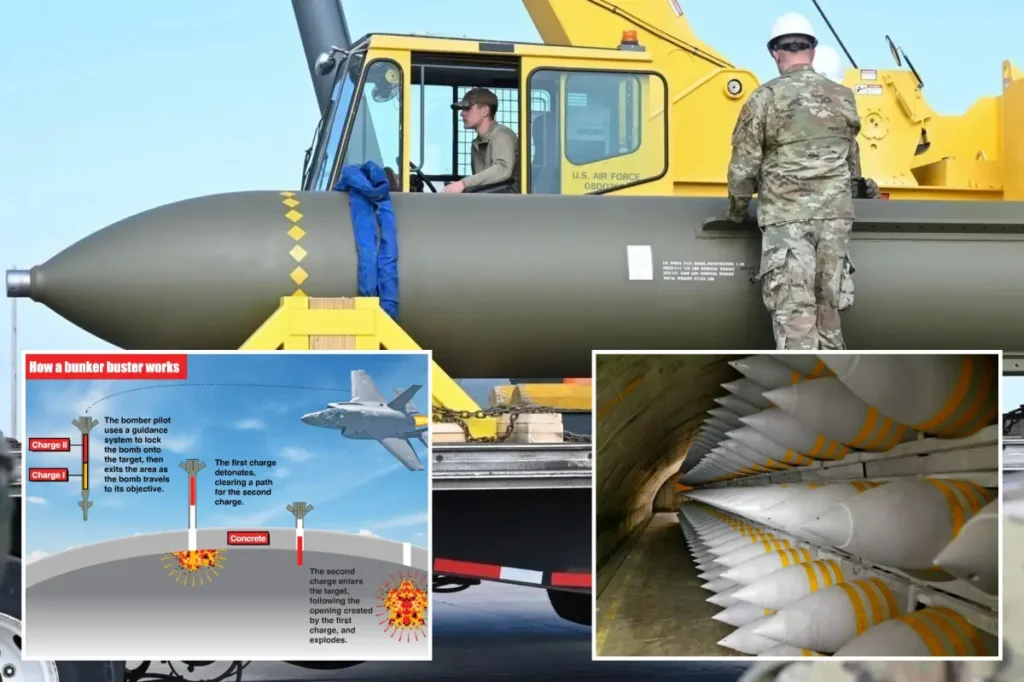As tensions continue to rise in the Middle East, attention is turning to a formidable U.S. military asset — the GBU-57 Massive Ordnance Penetrator. This 30,000-pound bunker-busting bomb may become a central weapon in America’s arsenal if former President Donald Trump, or any future administration, opts for direct military action in support of Israel against Iran’s nuclear ambitions.
What Is the GBU-57?
The GBU-57, developed in the early 2000s and manufactured by Boeing, is designed specifically to neutralize deeply buried targets — a capability unmatched by any conventional Israeli weapon. At 6.6 meters in length and weighing over 13,600 kilograms, it can pierce up to 200 feet (61 meters) of earth, rock, or reinforced concrete before detonating. This makes it one of the only known munitions capable of reaching facilities like Iran’s Fordo uranium enrichment site, which is embedded deep beneath a mountain.
Why Is Fordo a Target?
Recent Israeli military operations have inflicted heavy damage on various Iranian surface targets, including missile launch sites, command centers, and production facilities. However, reports from the International Atomic Energy Agency (IAEA) confirm that Fordo, located south of Tehran, remains untouched. Its extreme depth and fortified design make it nearly impossible to penetrate using conventional weaponry — positioning the GBU-57 as the only viable solution for a full-scale strike.
How the GBU-57 Works
Unlike typical bombs that explode upon or shortly after impact, the GBU-57 is engineered to delay detonation until it reaches its intended depth. According to defense experts, its steel casing and specialized fuse system allow it to survive the extreme pressures of underground penetration.

“To destroy such deeply buried facilities, the bomb must punch through rock and concrete,” explains Masao Dahlgren of the Center for Strategic and International Studies (CSIS). “That’s why its casing and fuse are so unique — it has to absorb immense shock before igniting.”
Deployment and Capabilities
Only one aircraft in the U.S. arsenal is capable of carrying the GBU-57: the B-2 Spirit stealth bomber. With global reach, B-2s can fly non-stop from the U.S. to the Middle East and return, making them ideal for high-value missions.
In early May, B-2s were stationed at Diego Garcia — a strategic military base in the Indian Ocean. Although they were no longer visible via satellite by mid-June, analysts believe they could be repositioned at any time, given their stealth and range capabilities.
Each B-2 can carry two GBU-57 bombs, but military strategists warn that multiple strikes would likely be required to achieve complete destruction of targets like Fordo.
“It’s not going to be one and done,” said former Air Force General Norton Schwartz. “You’d need multiple hits to be sure the facility is neutralized.”
Risks and Political Ramifications
Deploying such a powerful weapon would not be without consequences. Behnam Ben Taleblu, an Iran expert at the Foundation for Defense of Democracies (FDD), warns that while the bomb could offer a military solution, it would also come with “significant political baggage for America.”
Taleblu also noted that military solutions alone might not be enough to disable Iran’s nuclear program entirely. In the absence of a GBU-57 strike, Israel might focus on alternative strategies — such as targeting entrances, infrastructure, or electrical systems surrounding key underground facilities — as they have reportedly done at other sites like Natanz.




